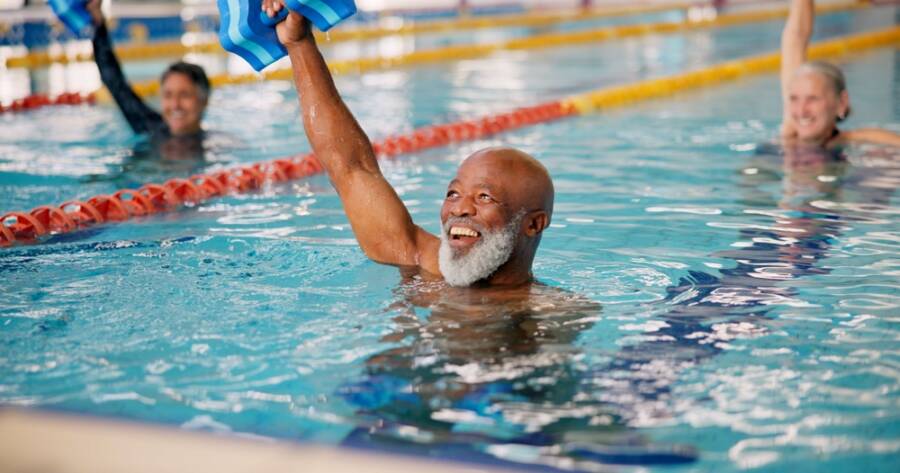Movement should strengthen the body, not strain it. Low-impact workouts offer a sustainable way to stay fit while protecting your joints and maintaining flexibility. They’re gentle on the knees, hips, and spine, yet powerful enough to build strength, endurance, and stability. From swimming to Pilates, low-impact forms of exercise prove that intensity doesn’t always require impact. By moving mindfully, you can stay active for life, without pain holding you back.
Why Low-Impact Exercise Matters
High-impact workouts can be rewarding, but they aren’t always sustainable. Over time, repetitive stress on the joints can lead to inflammation, discomfort, and injury. Low-impact exercise offers the same cardiovascular and muscular benefits — just with less strain. It supports long-term mobility, flexibility, and balance while giving the body time to recover between workouts.
These gentle forms of movement are ideal for beginners, older adults, or anyone managing joint sensitivity. They improve circulation, posture, and endurance without the wear and tear. The goal isn’t to move less — it’s to move smarter. By protecting your joints, you create the foundation for lifelong strength and stability.
Swimming: Full-Body Strength Without Pressure
Water workouts are among the most joint-friendly forms of exercise. The natural buoyancy of water supports your body weight, reducing impact while still providing resistance for your muscles. Swimming engages nearly every muscle group, especially the core, shoulders, and legs, offering both strength training and cardiovascular conditioning in one fluid motion.
Beyond its physical benefits, swimming has a calming rhythm that relieves stress and tension. The water cools, cushions, and challenges your body at the same time. Even gentle laps or water aerobics can increase endurance, improve flexibility, and enhance coordination — all without pain or pressure on the joints.
Cycling: Strengthening Without Strain
Cycling, whether on a stationary bike or outdoors, is an excellent way to build leg and cardiovascular strength with minimal joint impact. The circular motion of pedaling reduces pressure on knees and ankles while still working major muscle groups like the quadriceps, hamstrings, and glutes.
Cycling’s low-impact rhythm also makes it easy to adjust intensity. You can coast, sprint, or climb resistance as your strength grows. Regular rides help improve circulation, heart health, and endurance while maintaining joint integrity. Add music or scenery, and it becomes more than a workout — it’s moving meditation on wheels.
Yoga and Pilates: Building Strength Through Control
Yoga and Pilates combine mindful movement with deep strength work. Both emphasize alignment, core stability, and breath control, which support the joints by improving balance and muscle engagement. By strengthening the muscles around vulnerable areas like knees and hips, these practices reduce strain and enhance mobility.
Yoga’s focus on flexibility also releases tightness that can pull on the joints, while Pilates strengthens stabilizing muscles that protect the spine and pelvis. Together, they promote full-body awareness — a skill that prevents overextension or uneven weight distribution. Slow, deliberate movement builds strength from the inside out, making every motion purposeful and protective.
Walking and Elliptical Training: Simple but Powerful
Walking remains one of the most effective low-impact workouts available. It strengthens bones, improves heart health, and enhances circulation — all while being easy to incorporate into daily life. Even a brisk 20-minute walk can raise your heart rate, lift your mood, and increase joint lubrication.
For those who want a similar feel with added variety, elliptical machines offer a smooth, gliding motion that mimics running without the pounding impact. They allow you to adjust resistance and speed, offering a full-body workout that’s joint-safe yet challenging. Both options are ideal for building stamina and staying consistent over time.
Resistance Bands and Bodyweight Strength
Low-impact doesn’t mean low strength. Using resistance bands or bodyweight exercises builds lean muscle while maintaining full control of movement. Squats, wall sits, bridges, and push-ups can all be performed in ways that minimize joint stress but still engage major muscle groups.
Resistance bands are particularly effective because they offer adjustable tension and a full range of motion. They strengthen connective tissue, improve coordination, and can be used virtually anywhere. The slow, steady resistance allows for muscle development without sudden strain — perfect for safe, sustainable strength training.
Moving Gently, Growing Stronger
Low-impact workouts prove that protecting your joints doesn’t mean limiting your potential. With mindful movement, you can build strength, improve balance, and stay energized without pain. Each session becomes an act of longevity — a way to care for your body so it can carry you through life’s next adventures. Progress may feel softer, but it runs deeper. The goal isn’t exhaustion; it’s endurance and the quiet, lasting strength that comes from moving with intention.

